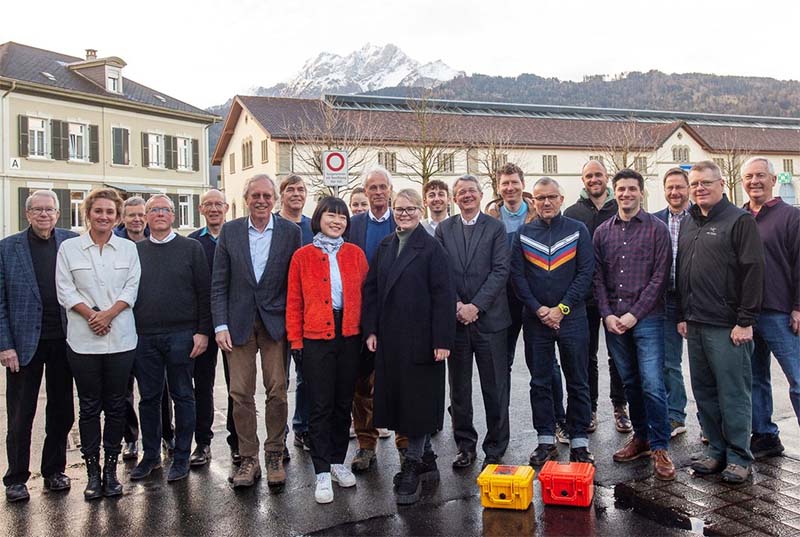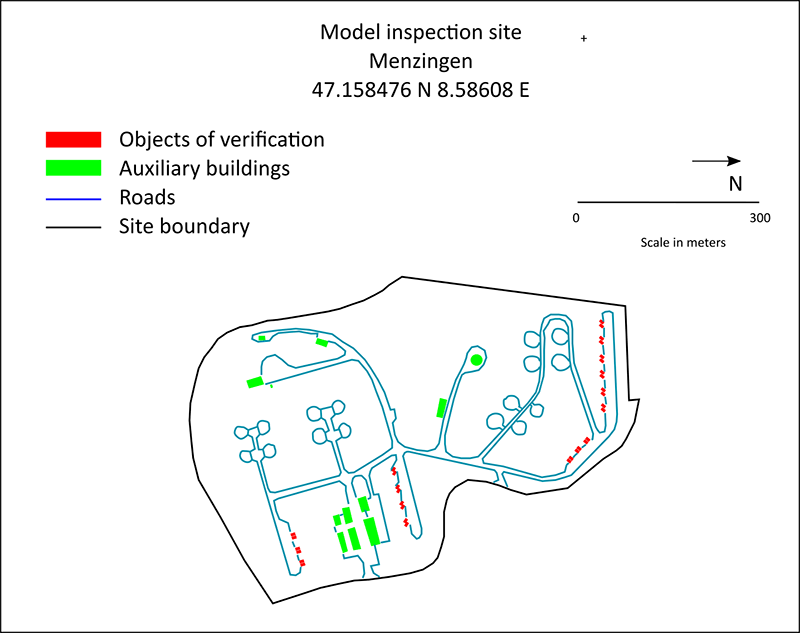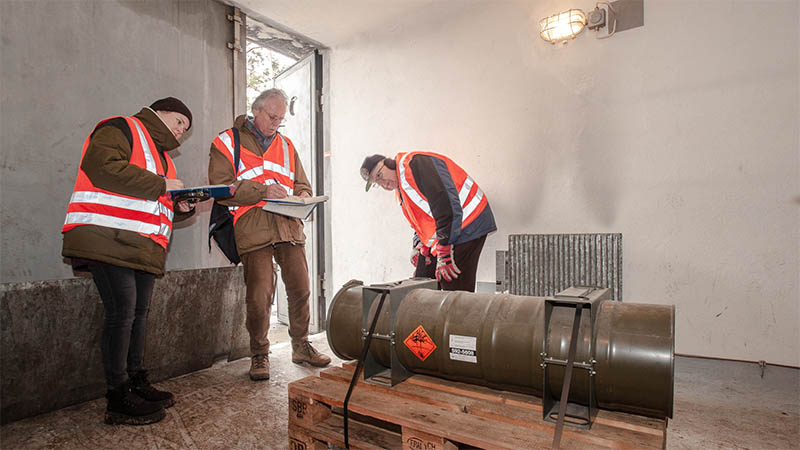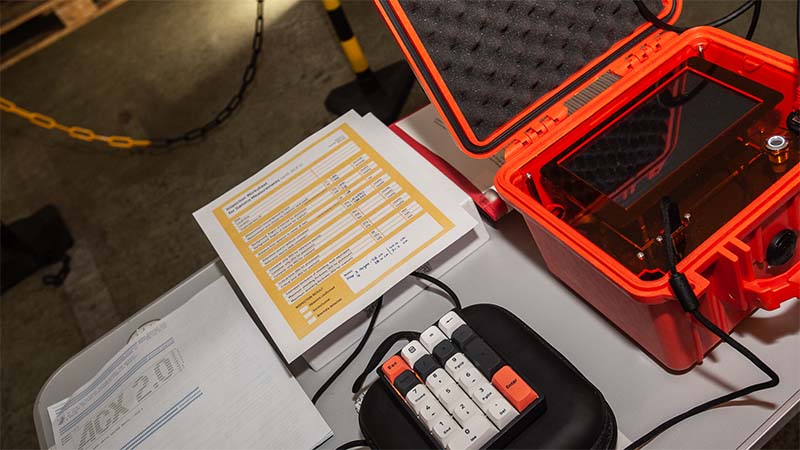The Menzingen Verification Experiment, which took place on 8 March 2023, was designed to test practical procedures for verifying the absence of nuclear weapons at a storage site. The experiment was organized by UNIDIR in partnership with the Swiss Army, Spiez Laboratory, Princeton University’s Program on Science and Global Security, and Open Nuclear Network. The project was supported by the Governments of the Netherlands, Norway, and Switzerland.
The experiment modelled an on-site inspection of a nuclear weapons storage site, represented by a former air defense site near Menzingen, Switzerland. In preparation for the experiment, UNIDIR developed a model protocol governing the inspection activities. Together with its partners, it designed procedures to confirm the non-nuclear nature of the inspected items, including radiation measurements with active sources, and arranged for the acquisition of satellite imagery of the site.
Participants in the exercise, who came from seven different countries, were based in Lucerne, where the Armed Forces College provided a venue for the pre-inspection and post-inspection workshops.



